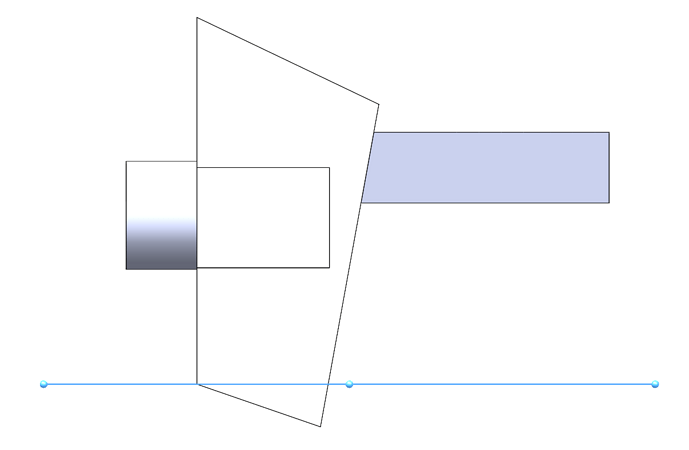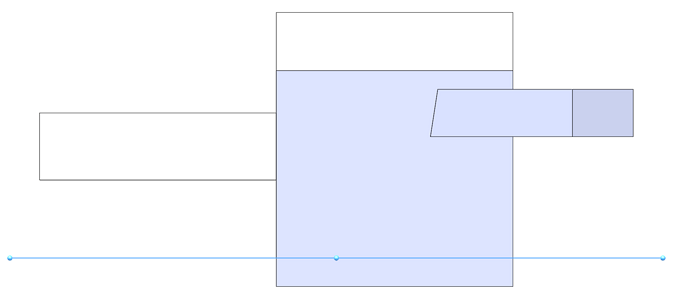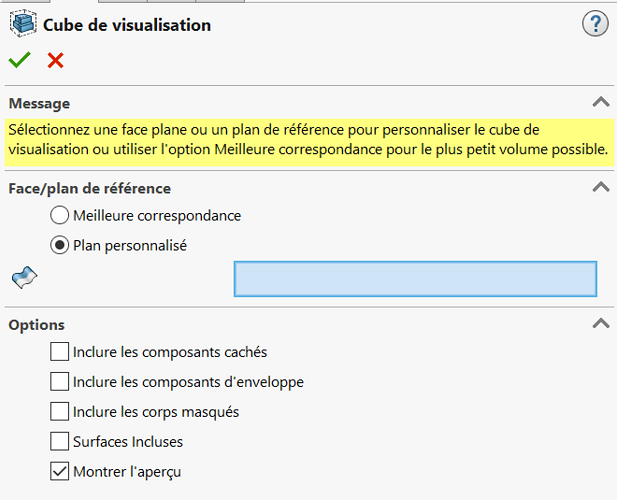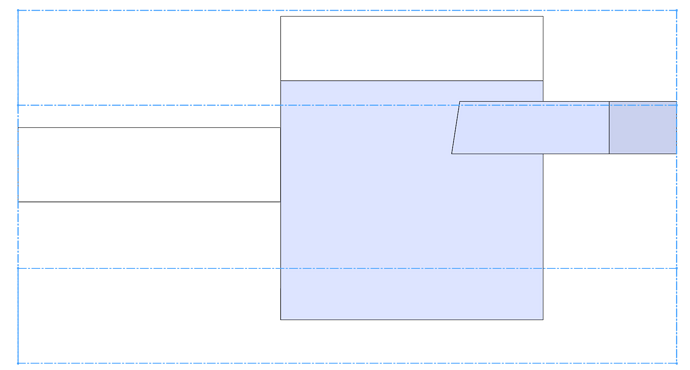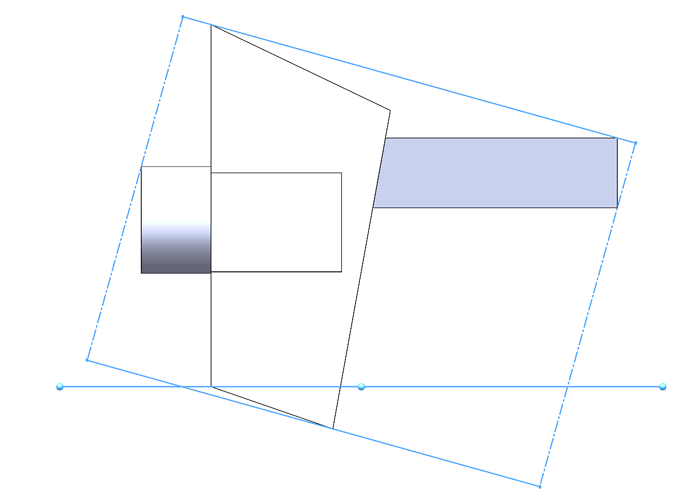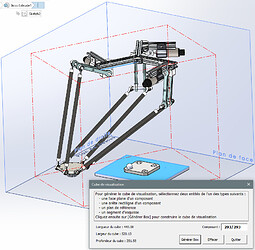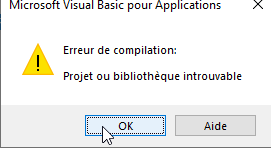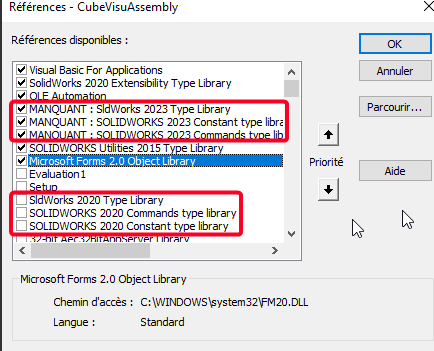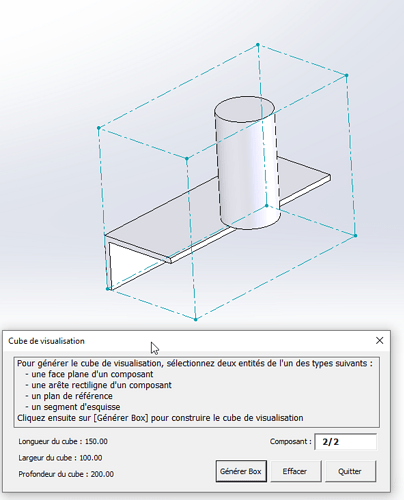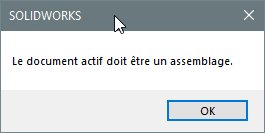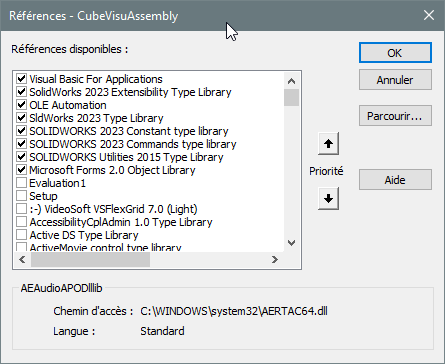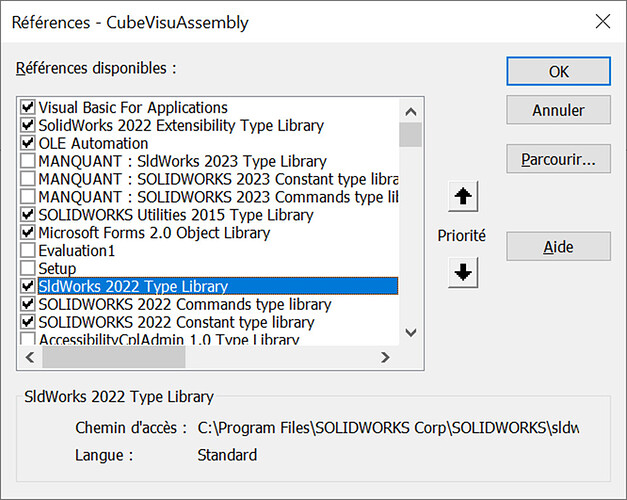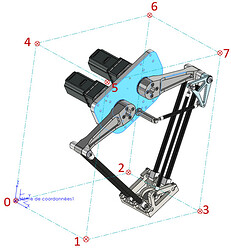Hello @a.eriaud
I have this macro that works well by orienting itself according to XYZ:
Dim swApp As SldWorks.SldWorks
Sub main()
Set swApp = Application.SldWorks
Dim swPart As SldWorks.PartDoc
Set swPart = swApp.ActiveDoc
If Not swPart Is Nothing Then
Dim vBBox As Variant
vBBox = GetPreciseBoundingBox(swPart)
DrawBox swPart, CDbl(vBBox(0)), CDbl(vBBox(1)), CDbl(vBBox(2)), CDbl(vBBox(3)), CDbl(vBBox(4)), CDbl(vBBox(5))
Debug.Print "Width: " & CDbl(vBBox(3)) - CDbl(vBBox(0))
Debug.Print "Length: " & CDbl(vBBox(5)) - CDbl(vBBox(2))
Debug.Print "Height: " & CDbl(vBBox(4)) - CDbl(vBBox(1))
Else
MsgBox "Please open part"
End If
End Sub
Function GetPreciseBoundingBox(part As SldWorks.PartDoc) As Variant
Dim dBox(5) As Double
Dim vBodies As Variant
vBodies = part.GetBodies2(swBodyType_e.swSolidBody, True)
Dim minX As Double
Dim minY As Double
Dim minZ As Double
Dim maxX As Double
Dim maxY As Double
Dim maxZ As Double
If Not IsEmpty(vBodies) Then
Dim i As Integer
For i = 0 To UBound(vBodies)
Dim swBody As SldWorks.Body2
Set swBody = vBodies(i)
Dim x As Double
Dim y As Double
Dim z As Double
swBody.GetExtremePoint 1, 0, 0, x, y, z
If i = 0 Or x > maxX Then
maxX = x
End If
swBody.GetExtremePoint -1, 0, 0, x, y, z
If i = 0 Or x < minX Then
minX = x
End If
swBody.GetExtremePoint 0, 1, 0, x, y, z
If i = 0 Or y > maxY Then
maxY = y
End If
swBody.GetExtremePoint 0, -1, 0, x, y, z
If i = 0 Or y < minY Then
minY = y
End If
swBody.GetExtremePoint 0, 0, 1, x, y, z
If i = 0 Or z > maxZ Then
maxZ = z
End If
swBody.GetExtremePoint 0, 0, -1, x, y, z
If i = 0 Or z < minZ Then
minZ = z
End If
Next
End If
dBox(0) = minX: dBox(1) = minY: dBox(2) = minZ
dBox(3) = maxX: dBox(4) = maxY: dBox(5) = maxZ
GetPreciseBoundingBox = dBox
End Function
Sub DrawBox(model As SldWorks.ModelDoc2, minX As Double, minY As Double, minZ As Double, maxX As Double, maxY As Double, maxZ As Double)
model.ClearSelection2 True
model.SketchManager.Insert3DSketch True
model.SketchManager.AddToDB = True
model.SketchManager.CreateLine maxX, minY, minZ, maxX, minY, maxZ
model.SketchManager.CreateLine maxX, minY, maxZ, minX, minY, maxZ
model.SketchManager.CreateLine minX, minY, maxZ, minX, minY, minZ
model.SketchManager.CreateLine minX, minY, minZ, maxX, minY, minZ
model.SketchManager.CreateLine maxX, maxY, minZ, maxX, maxY, maxZ
model.SketchManager.CreateLine maxX, maxY, maxZ, minX, maxY, maxZ
model.SketchManager.CreateLine minX, maxY, maxZ, minX, maxY, minZ
model.SketchManager.CreateLine minX, maxY, minZ, maxX, maxY, minZ
model.SketchManager.CreateLine minX, minY, minZ, minX, maxY, minZ
model.SketchManager.CreateLine minX, minY, maxZ, minX, maxY, maxZ
model.SketchManager.CreateLine maxX, minY, minZ, maxX, maxY, minZ
model.SketchManager.CreateLine maxX, minY, maxZ, maxX, maxY, maxZ
model.SketchManager.AddToDB = False
model.SketchManager.Insert3DSketch True
End Sub
My assemblies are always parallel to the top planes, so normal to Y, but not necessarily parallel to X (or Z).
I don't know if VBA macro functions would allow by selecting in advance the face that would be the orientation reference to generate a well-oriented 3D sketch...
If anyone has an idea of how to do this in macro, I'm interested 
![]()

